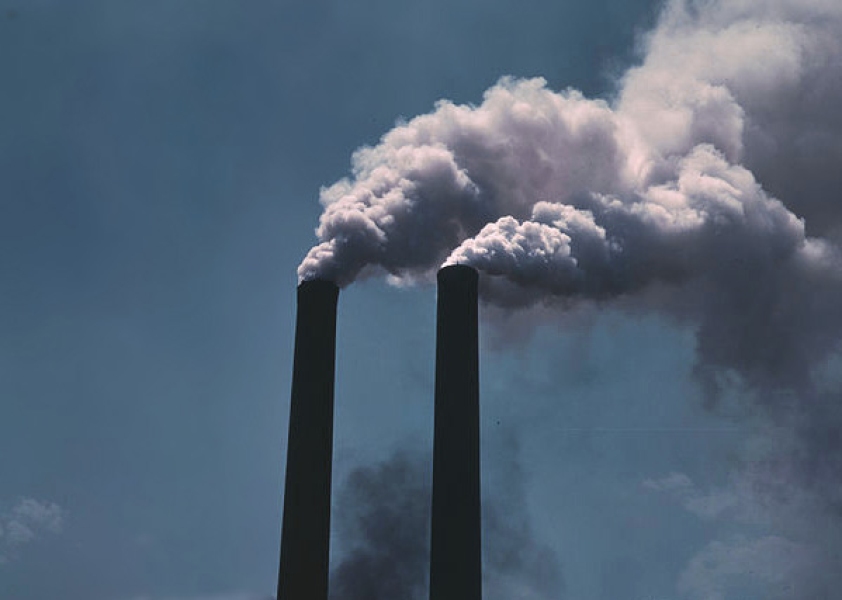You'll often hear about a power station emitting several million tonnes of carbon dioxide (CO2) in one year. But how can carbon emissions be weighed?
No one weighs the gas that comes out of the chimney! But the relationship between the weight of carbon and the weight of CO2 that is produced by burning it has been established in experiments many years ago. Every carbon atom burned will produce one CO2 molecule. An oxygen atom weighs 1⅓ times as much as a carbon atom, so a carbon dioxide molecule weighs 2 x 1⅓ + 1 = 3⅔ times as much as a carbon atom.
Power stations record how much coal they burned each year, and determine the carbon content of the coal (carbon content typically ranges from 60% to over 80%, depending upon where it is mined). So if a power station burns 1 million tonnes of coal which is 70% carbon, that's 700,000 tonnes of carbon which produces around 2.5 million tonnes of CO2.
The burning of fossil fuels, not only coal, but also oil and gas, produces CO2. Worldwide, more than 8 billion tonnes of carbon are burned per year. Based on the above calculation, nearly 30 billion tonnes of CO2 are produced per year, which is significantly changing the atmosphere.

